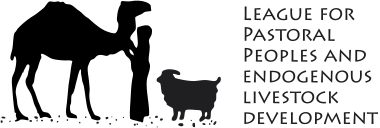Biocultural Community Protocols
“Biocultural Community Protocols” – an approach for livestock keeping communities to put on record their and traditional knowledge in stewarding biological diversity. They are a legal tool originally conceived by the NGO Natural Justice in response to the need for fair and equitable benefit-sharing agreements under the CBD. The first BCPs were pioneered by communities associated with the LIFE Network for community-based conservation of livestock biodiversity and the approach is receiving intense interest from many sides.
Current Project
- Asian Regional Initiative on BCPs

Publications
- Biocultural Community Protocols for Livestock Keepers. LPPS, 2010.
- Livestock Keepers. Guardians of biodiversity. FAO Animal Production and Health Paper 167.
- Keepers of Genes. Indian Pastoralists and their Livestock Breeds. LPPS
- Indigenous Breeds, Local Communities. Documenting Animal Breeds and Breeding from a Community Perspective
Women are the guardians of livestock diversity!
The FAO just published on-line a new study in its Animal Production and Health Paper series that analyses the role of women in managing livestock diversity. It concludes that “women, as the main users of locally adapted livestock breeds, play a major role in managing animal genetic resources and thereby conserving them. They also make deliberate breeding decisions, generally preferring animals that are easy to manage and disease resistant and that therefore do not increase their workload.” A number of case-studies, many of them from South India, are presented.
Review of experiences with Biocultural Protocols (BCPs) for livestock keepers
The latest edition of the Participatory Learning and Action Newsletter (PLA 65) is dedicated to the exploration of community protocols, rights and consent. It also contains an article by members of the LIFE Network in which they summarize their experiences with Biocultural Protocols for livestock keepers.
- Go to the previous page
- 1
- …
- 33
- 34
- 35
- 36
- 37
- 38
- 39
- …
- 86
- Go to the next page
